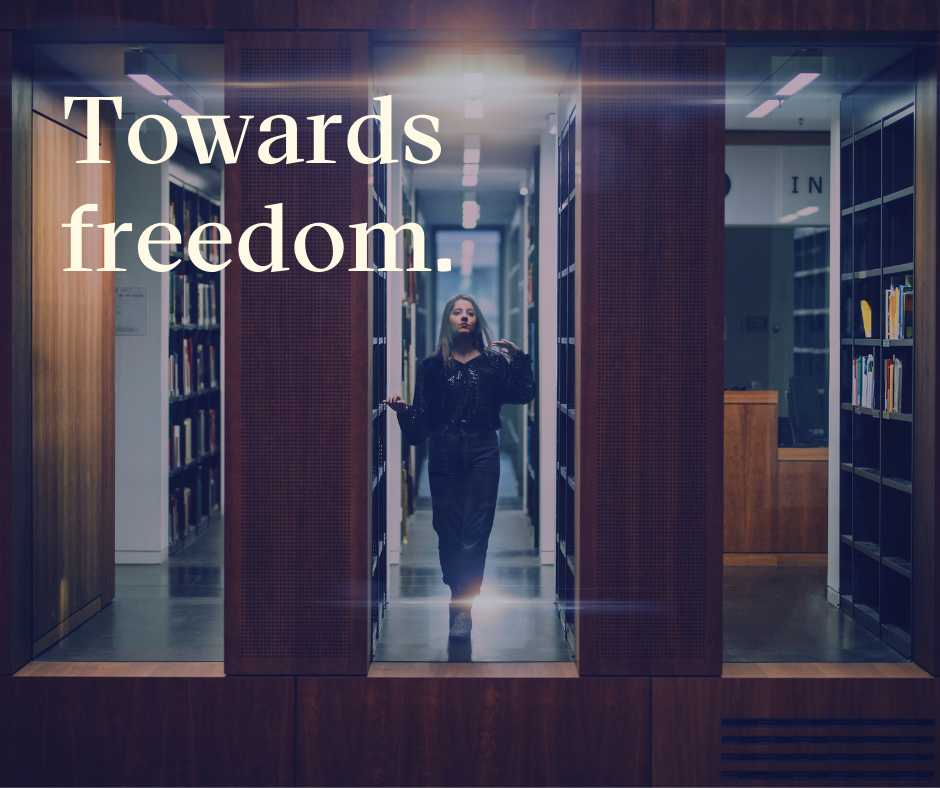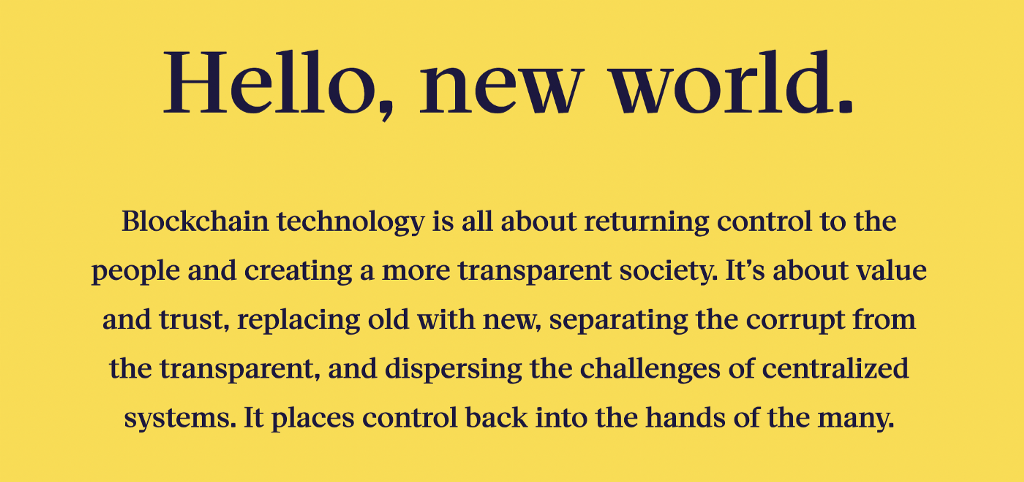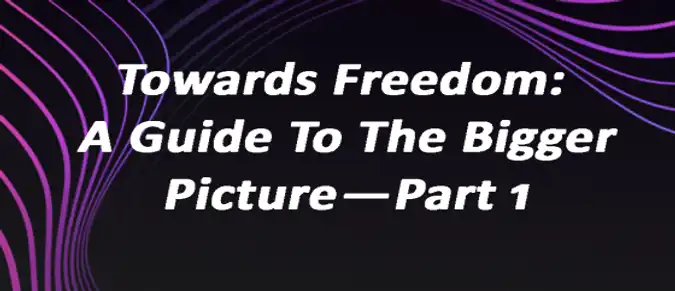Towards Freedom: A Guide To The Bigger Picture — Part 1
A trilogy on how blockchain will improve our lives by increasing our freedom.

Humans are complex beings. Far from being monolithic, they are composed of multiple identities. I can be at the same time a lawyer, a father, a husband, an aspirational painter, or a loving son (or its feminine pendant). These identities interact, sometimes they collide and enter into conflict with one another. I can be an ecologist that wants to save the planet while at the same time aspiring to travel.
These collisions are also visible in the world of blockchain. Many actors are at the same time crypto enthusiasts, digital citizens, coders, and investors. Each of these facets becomes more or less important throughout time and are being pushed up or down by the other, like in a wax lamp.
Different identities can cause friction because they operate on different timeframes. Our long-term beliefs can conflict with our inner investor’s desire for short-term gains. If we’re feeling upset because prices are not moving as fast as we want, we should listen to the enthusiast or crypto citizen within us and step back to see the bigger picture. To use a famous metaphor, we should look at the moon and not the finger pointing at it. In this short series, we look at three ways through which blockchain will improve our lives by increasing our freedom. Starting with: Social freedom.
Social Freedom: breaking out of restrictions
According to Christian Bay (1921–1990), there are three types of freedom: social freedom, potential freedom, and psychological freedom. In the “metaphor of the prison”, the Canadian political scientist illustrates the different ways to lose them. Today we explore what the political scientist Christian Bay calls social freedom which he defines as “the relative absence of perceived external restraints on individual behavior” (p.88), which essentially means the external restrictions upon our freedom.
In Bay’s metaphor, this is typically exemplified by the prison’s door being locked, which he depicts as coercion. When I’m denied the right to create a business freely, follow my religious beliefs or sexual orientation, these are examples of a lack of social freedom. The real selves of the Matrix are in a state of biological prison, trapped by machines to generate the electricity they need.
In the science fiction psychological thriller series Severance, the parts of people that are at work (the “innies”) are physically trapped in schemes that go beyond their control. These are actual restrictions. Through these restrictions, I feel less capable, smaller, and my margin of actions are reduced, whereas freedom rimes with possibilities, expansion, and generosity. The Covid crisis has provided a powerful example of a restriction of social freedom: borders closed, rigid protocols put in place, and limited possibilities to gather with friends and family and enjoy life. Social freedom is typically restricted by powerful institutions, first and foremost the state.
As long as the large trusted third parties hold the keys to most individual decisions, citizens are at their mercy. Since the state is often as strong as these institutions are, de-ballooning it is a way to reclaim some degree of social freedom. As said by Timothy May, “just as the technology of printing altered and reduced the power of medieval guilds and the social power structure, so too will cryptologic methods fundamentally alter the nature of corporations and of government interference in economic transactions”.
Blockchain provides a possible solution to disintermediate daily transactions among different entities by removing the need for third parties in most of the transactions we deal with. By doing so, it provides a way to remove some of the power of these large institutions and give back to the people. For instance, it represents a possibility of helping the most economically disadvantaged by providing a banking system to the 1.7 billion people unbanked in the world (according to the World Bank) that are largely left out of the traditional economic markets of the formal economy. In some of the countries where the unbanked represent up to 70% of the population (Morocco, Vietnam, Egypt, Philippines, Mexico) but there are blockchain services that make it possible to open an instant, low-cost wallet. Just with a smartphone, it becomes possible to cash in, cash out and pay for these people that are under the radar of traditional banks.
“Just as the technology of printing altered and reduced the power of medieval guilds and the social power structure, so too will cryptologic methods fundamentally alter the nature of corporations and of government interference in economic transactions” — Timothy May
This could also help facilitate money transfers for the 2 billion people relying on remittances. At the present moment, they typically have to use transfers with an intermediary cost of $15 to $25 on a $100 transfer. Paying through the blockchain would typically cost a few cents and, in comparison, would leave the hard-earned money to the family of these workers. From that perspective and despite recent issues, the OECD recognizes the importance of stablecoins to make these transfers less costly.
Finally, it is a possibility for anyone interested in wider social participation to create or participate in Decentralized Autonomous Organizations (DAOs). DAOs are based established by a core team and based on a smart contract that is visible and publicly auditable so that any member can understand its functioning. These protocols enable applications as wide as creating a charity, developing a network of entrepreneurs, or creating a venture fund without having to use a centralized institution. These are ways through which blockchain can solve everyday problems that are currently located in the interstices of the meshes created by large institutions, and thus increase social freedom for most.

The Blockchain OS can provide the framework and protocol for new kinds of freedom.
Blockchain technology, such as The Blockchain OS, can provide the framework or protocol for new kinds of freedom. But what if people do not want to get out of their prison? What if the door of the prison is open but I don’t dare to go out? We will explore this and the paucity of psychological freedom in the next episode of this trilogy.
About Cartesi
The Blockchain OS is a decentralized layer-2 infrastructure that supports Linux and mainstream software components. For the first time, developers can code scalable smart contracts with rich software tools, libraries, and the services they’re used to, bridging the gap between mainstream software and blockchain.
Cartesi is enabling millions of new startups and their developers to use The Blockchain OS and bring Linux applications on board. With a groundbreaking virtual machine, optimistic rollups, and side-chains, Cartesi paves the way for developers of all kinds, to build the next generation of blockchain apps.





